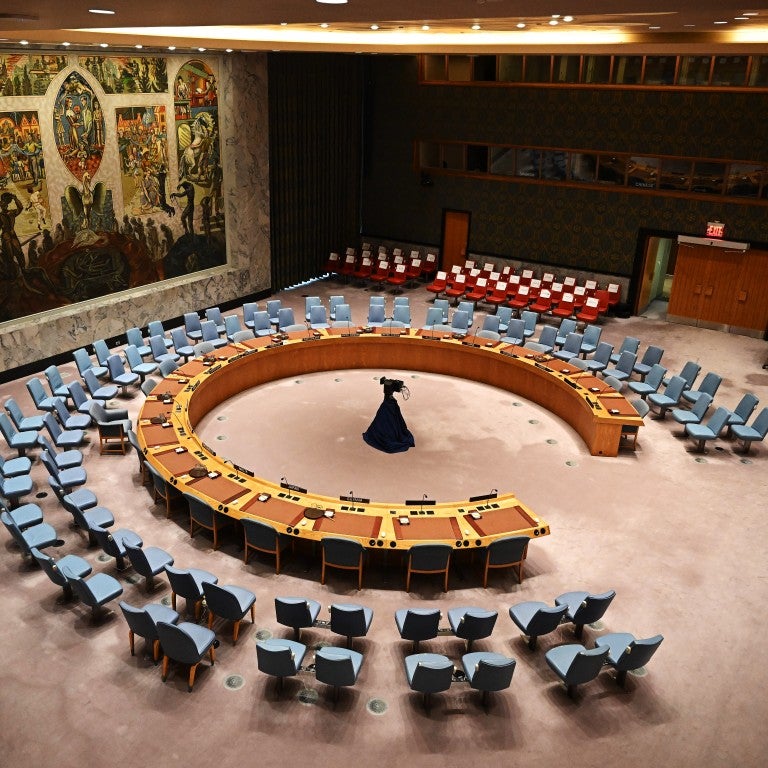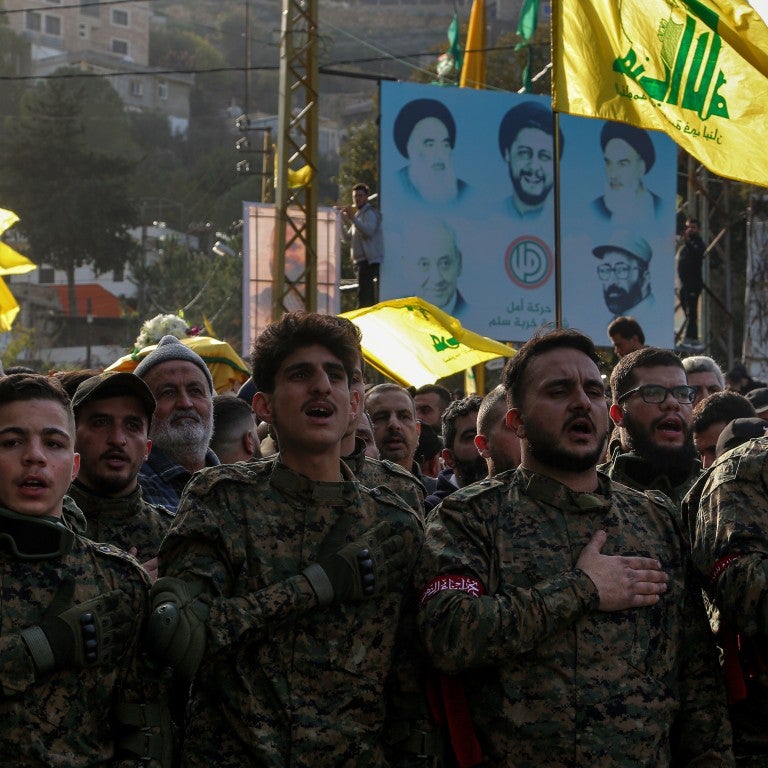September 5, 2024
The brutal execution of six hostages by Hamas in late August has heightened the urgency to free the 100+ hostages still held by the terror group nearly a year after the October 7 massacre that left 1,200 people dead and over 254 kidnapped.
Among the six was Hersh Goldberg-Polin, an Israeli-American whose courageous parents have actively drawn attention to his story and the plight of all hostages. Before Israeli forces recovered his body, he was one of eight living or deceased American hostages still in Hamas captivity.
Hersh is among dozens of Americans killed by Hamas, which has a long history of murdering U.S. nationals dating back to its founding in the late 1980s.
Here's what to know about the Americans killed by Hamas on and before October 7, 2023.
How many Americans did Hamas kill on 10/7?
In the initial days and weeks after the attacks, U.S. State Department officials estimated 32 Americans were killed. A Congressional report in early August increased that number to at least 35, and most recently, as part of a U.S. Department of Justice federal indictment of Hamas’ leadership, at least 43 U.S. nationals were declared dead.
It is important to note that Hamas targeted individuals from over 40 different nationalities during its attacks in Israel. The victims included citizens from the United States, Canada, France, Germany, the United Kingdom, Thailand, Nepal, and several other countries, reflecting the global impact of the attack.
Among those killed were young people attending the Nova music festival, families in their homes, and individuals simply going about their daily lives. The attack shocked the world and underscored the indiscriminate violence Hamas has long directed at civilians, including U.S. nationals.
Who are some of the American victims of Hamas’ 10/7 attack?
One of the victims was Hayim Katsman, a 32-year-old dual U.S.-Israeli citizen, who earned his doctorate from the University of Washington in 2021 but was determined to return to Israel to contribute to a peaceful future for Israelis and Palestinians. Tragically, Katsman was killed while protecting a neighbor during Hamas’ attack on their kibbutz.
Another American victim was Deborah Matias, 50, and her husband, Shlomi, 49, who were tragically killed while shielding their 16-year-old son, Rotem, during the Hamas attack on October 7. Despite being shot in the abdomen, Rotem survived by following instructions from his family via text message for 12 hours until help arrived. Deborah, a dual U.S.-Israeli citizen, had lived in a kibbutz in southern Israel for over a decade with her husband, Shlomi. Both were musicians, and Deborah's father, Ilan Troen, is a professor emeritus of Israel studies at Brandeis University in Massachusetts.
Other U.S. victims included Cindy Flash, a Minnesota native, who moved to Israel in 1979, where she embraced the communal life of a kibbutz, married, and raised three daughters. She was also a strong advocate for peace and Palestinian rights. On October 7, after hours of hiding in their safe room during the Hamas attack, Cindy, 67, and her husband Igal, 66, were tragically killed as terrorists breached their home near the Gaza Strip.
Danielle Waldman, 24, originally from Palo Alto, California, moved to Israel with her family and was a talented dancer and photographer. On October 7, she and her fiancé Noam Shay were killed at the Nova festival during the Hamas attacks; Danielle’s father discovered their bullet-riddled car and later buried them together, as they had planned to marry soon.
What has been the U.S. response to Hamas murdering U.S. citizens?
Following the murder of Hersh Goldberg-Polin, President Biden expressed deep sorrow and outrage, highlighting Hersh's bravery and his family's courage while vowing that Hamas leaders will be held accountable and efforts will continue to secure the release of the remaining hostages.
On September 3, the U.S. Department of Justice charged Yahya Sinwar, the leader of Hamas, along with five other senior members of the group, with orchestrating years of terrorist attacks in Israel, including the October 7 massacre. The sweeping complaint, originally filed in February and unsealed recently, implicates additional Hamas leaders not previously linked to the attacks and confirms that 43 Americans were killed. Among those charged are Ismail Haniyeh, Muhammad Deif, Marwan Issa, Ali Barakeh, and Khaled Meshal. Deif and Issa were killed in Israeli airstrikes earlier this year, and Haniyeh was assassinated in Iran in late July.
The charges come at a critical time, following the recent execution of six hostages by Hamas, including Israeli-American Hersh Goldberg-Polin, whose death has spurred widespread grief and anger.
“On October 7th, Hamas terrorists, led by these defendants, murdered nearly 1200 people, including over 40 Americans, and kidnapped hundreds of civilians,” said U.S. Attorney General Merrick Garland. “We are investigating Hersh’s murder, and each and every one of Hamas’ brutal murders of Americans, as an act of terrorism. The charges unsealed today are just one part of our effort to target every aspect of Hamas’ operations. These actions will not be our last.”
The complaint details Hamas' violent history, its funding sources, and the involvement of its leaders in planning and executing attacks against Israel and its allies. The U.S. Justice Department, while acknowledging the challenges of capturing these leaders, has brought forward charges that include conspiracy to murder U.S. citizens and support terrorism, underscoring Hamas' long-standing objective to destroy Israel and retaliate against the United States for its support of Israel.
Who were the Americans killed by Hamas prior to 10/7?
Before the October 7 massacre, Hamas had been responsible for numerous large-scale terror attacks over the last four decades, resulting in the deaths of American citizens. The U.S. designated Hamas as a foreign terrorist organization in 1997.
Notable examples include the 1995 Kfar Darom suicide attack carried out by Palestinian Islamic Jihad using a bomb designed by Hamas engineer Yahya Ayyash that killed eight people, including American Alisa Flatow, and the 1996 Jerusalem bus bombing, where American students Matthew Eisenfeld and Sara Duker were among the 26 killed.
During the Second Intifada (2000-2005), a violent Palestinian uprising, several Hamas suicide and bus bombings resulted in American deaths. Notable attacks include the August 9, 2001, bombing of Sbarro Pizzeria in Jerusalem, which murdered Americans Malka Roth, who was 15 at the time, Judith Greenbaum, who was pregnant at the time, and Chana Nachenberg, who died in 2023 after being in a coma for over 20 years; the 2002 Hebrew University bombing, which claimed the lives of five Americans: Marla Bennett, Benjamin Blutstein, Dina Carter, Janis Coulter, and David Gritz; the June 18, 2002, bus bombing in Jerusalem, where American Alan Beer was among the 17 victims; and the March 27, 2002, Park Hotel bombing in Netanya during Passover, which killed several Americans.
In 2015, Eitam Henkin, an American citizen, and his wife Naama were killed in a drive-by shooting by Hamas gunmen near Nablus in the West Bank. Their four young sons, including a four-month-old infant, were in the backseat of the car during the shooting but were unharmed. One of the attackers accidentally shot himself, which may have contributed to the children's survival.
What are some other examples of Iranian-backed terror proxies killing Americans?
Iran has a long history of using proxy groups to target Americans, often resulting in significant casualties. One of the earliest and deadliest examples was the 1983 Beirut Barracks bombing, where Hezbollah, an Iranian-backed terror group in Lebanon, killed 241 U.S. service members. Similarly, the 1996 Khobar Towers bombing in Saudi Arabia, carried out by Saudi Hezbollah with Iranian support, killed 19 U.S. Air Force personnel. During the Iraq War (2003-2011), Iranian-backed Shia militias, including Kata’ib Hezbollah, used Iranian-supplied explosives to kill hundreds of U.S. troops.
More recently, Iranian-backed militias have been involved in attacks on U.S. bases in Iraq, Jordan, and Syria, such as the December 2019 rocket attack by Kata’ib Hezbollah that killed an American contractor. In March 2023, an Iranian-linked drone attack on a U.S. base in Syria killed another American contractor, and in December 2023, a U.S. outpost in Jordan was targeted by Iranian-backed militias in Iraq, which killed three U.S. Army soldiers.
Meanwhile, the Iranian-backed Houthis in Yemen continue to threaten Israel, global shipping, and U.S. naval forces in the Red Sea.
These groups, supported and trained by Iran’s Islamic Revolutionary Guard Corps (IRGC), continue to pose a threat to U.S. personnel in the region.





